Disclosure: Please note that some links are affiliate links, and at no additional cost to you, we earn a commission if you make a purchase.
If you would like to support this website in some way, using these links will help do exactly that.
Centrally located in the middle of the pedestrian zone, the Kurpfälzisches Museum der Stadt Heidelberg, Electoral Palatinate Museum, is located inside the Palais Morass, a Baroque palace building. The history of the museum dates back to the initiative of the French emigre, Count Charles de Graimberg, who from 1810 began to devote himself to preserve the history of the Heidelberg Palace and the Palatine Princely House. His collection of coins, pictures and altars as well as sculptures (over 3,500) are the foundation of the Kurpfalz Museum.
The art collection of Charles de Graimberg was purchased from the city in 1879 and the museum was opened in 1908. After adding a new building in 1991 adjacent to the palace building, the collection grew immensely, and makes the museum experience itself a wild adventure of different styles of rooms, floors, and exhibits. It feels like the inside is so much bigger than the outside lets on. Besides collections of paintings from the 15th to the 20th century, you can also find sculptures, porcelain, Heidelberg city history, and costumes from a bygone era. Denise fell in love with Karl Weysser’s painting ‘Alte Poststation in Heidelberg mit Blick in die Seminarstrasse,’ and finding a postcard with the artwork on it in the gift shop made her very happy.
Besides art, there are also numerous archaeological finds in the museum, mainly through the remains of the Roman Neckar Bridge, which was discovered in 1877. Further archaeological excavations in Heidelberg and the surrounding palatine area after WWII, made the collection grow considerably.
History, art, porcelains, historical costumes, archaeology, period interiors, the Kurpfälzisches Museum der Stadt Heidelberg has something for everyone, and we enjoyed it very much! For more information regarding visiting hours and the history of the museum, visit their official site Kurpfälzisches Museum.
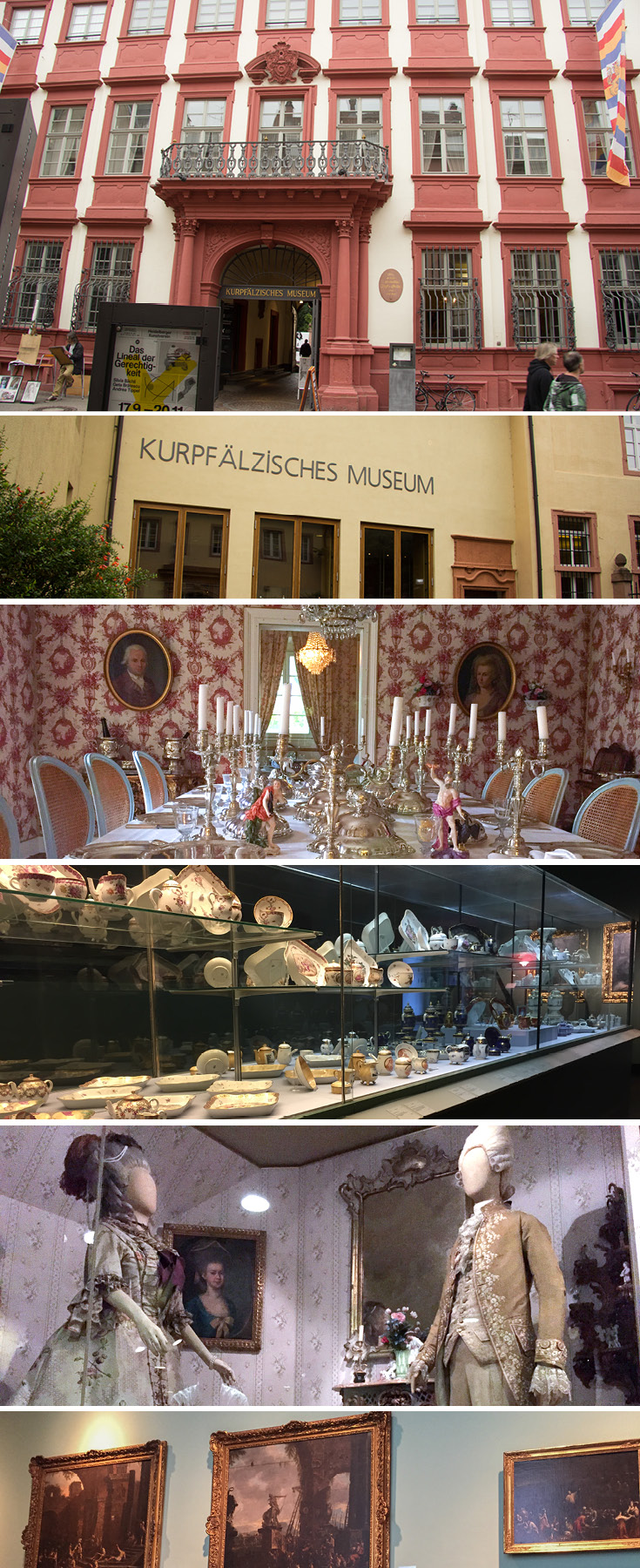
Follow Along
If you enjoyed this article, or these topics sound interesting to you, you'll love our weekly newsletter. You'll receive the newest posts each week and exclusive access to free planning resources like ‘Packing List & Tips for 2 Weeks in Germany’ and ‘Everything You Need to Rent a Car in Germany’.
Thank you for reading!

While we were climbing to the top of every aviation and boat exhibit we were allowed in the Technik Museum of Speyer, we could see the Cathedral waiting patiently, a jewel box on the horizon. It certainly built the anticipation. The museum and the cathedral are close enough, and Germany is in general pedestrian-friendly enough, that it was an easy, safe walk from one to the other. One weird intersection with crosswalks and a street until you’re in the larger park leading to the cathedral.
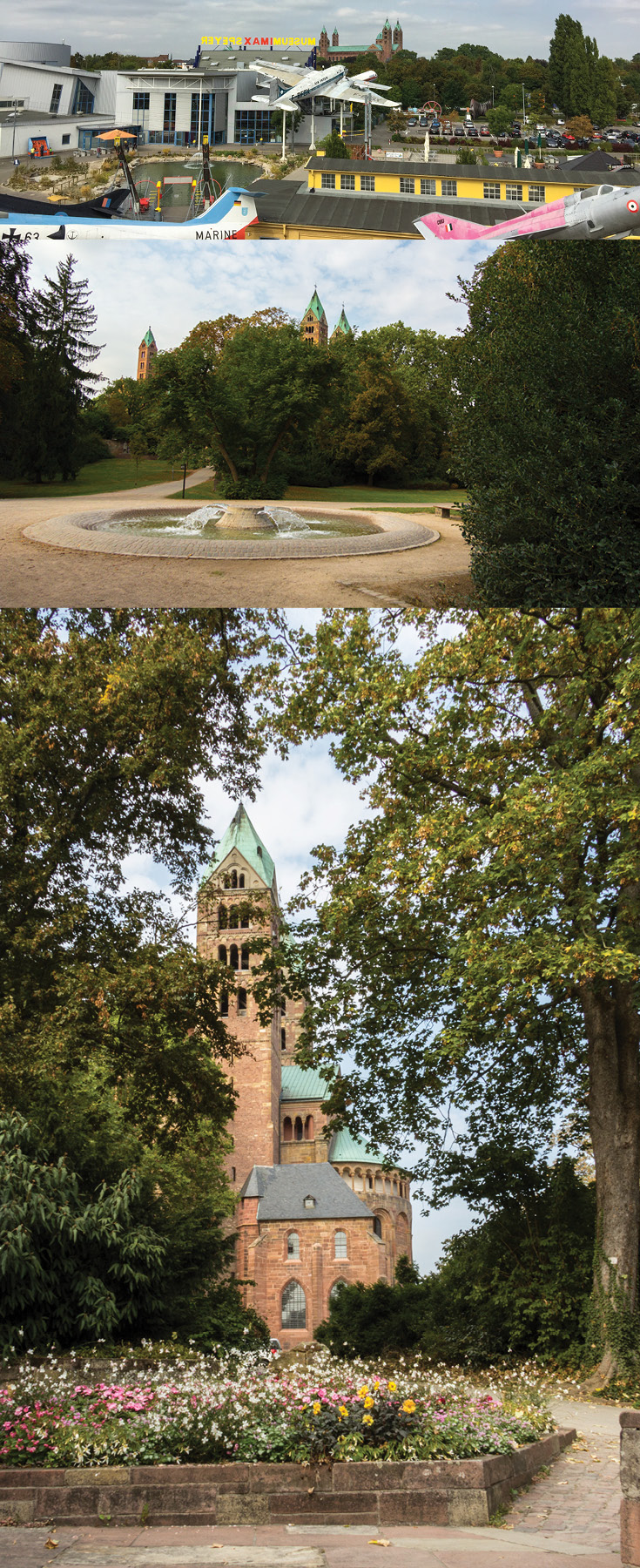
Largest Romanesque Architecture
You could describe this cathedral as so many firsts, largest, best. Being a part of the UNESCO World Heritage List tends to suggest as much. Speyer Cathedral, or Imperial Cathedral of Speyer, Kaiserdom zu Speyer, is the largest example of Romanesque Architecture in the World, the first building constructed entirely from stone in Europe, the first to have an exterior gallery and system of arcades around the entire building, a pilgrimage site, the resting place of 8 Kings and Emperors, and was the biggest church in the western hemisphere at the time of it's completion in 1106. Phew! To say this is a very important building feels like an understatement.
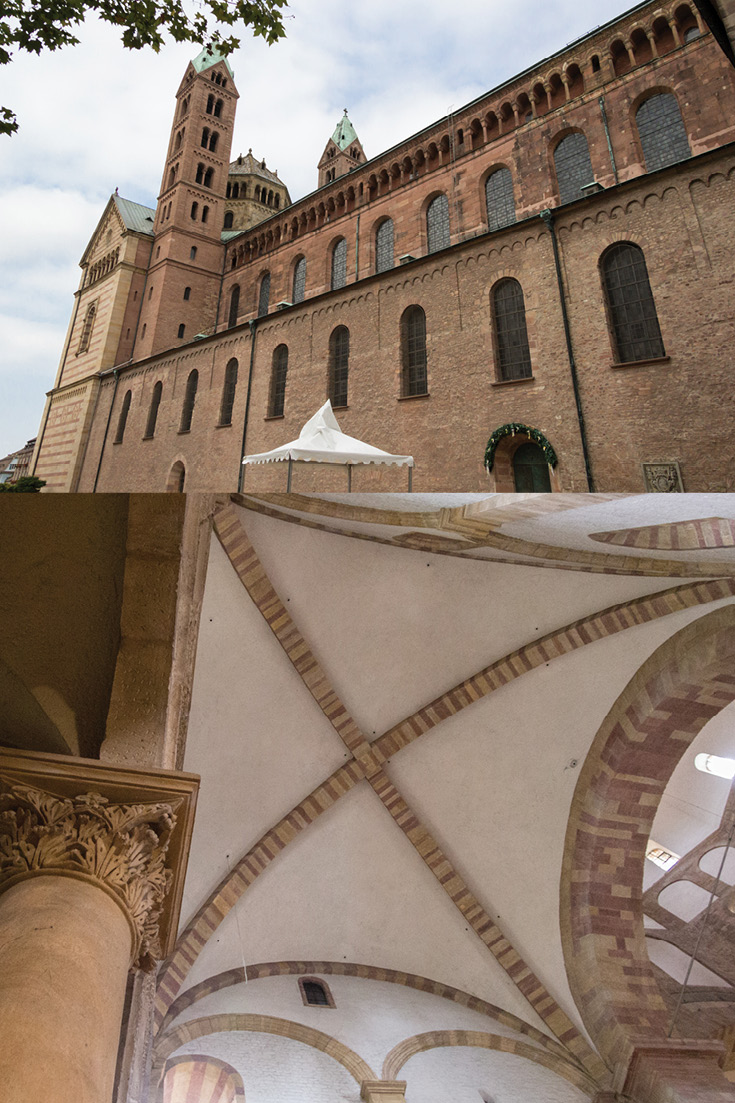
But, how does it make you feel? Personally, it was a calming, solemn, space. Not in anyway creepy as some older European churches are. With minimal ornamentation and varying natural colors shining purely from the carefully placed red sandstone from the nearby Palatine Forest Mountains, this cathedral is the most naturally beautiful church I’ve seen. I have to wonder if the architect Antoni Gaudi hadn’t once visited the Speyer Cathedral? The smooth, soaring semi-circular columns offers the same feeling of being in a quiet forest, just as I had felt in Gaudi’s Sagrada Familia in Barcelona, Spain.
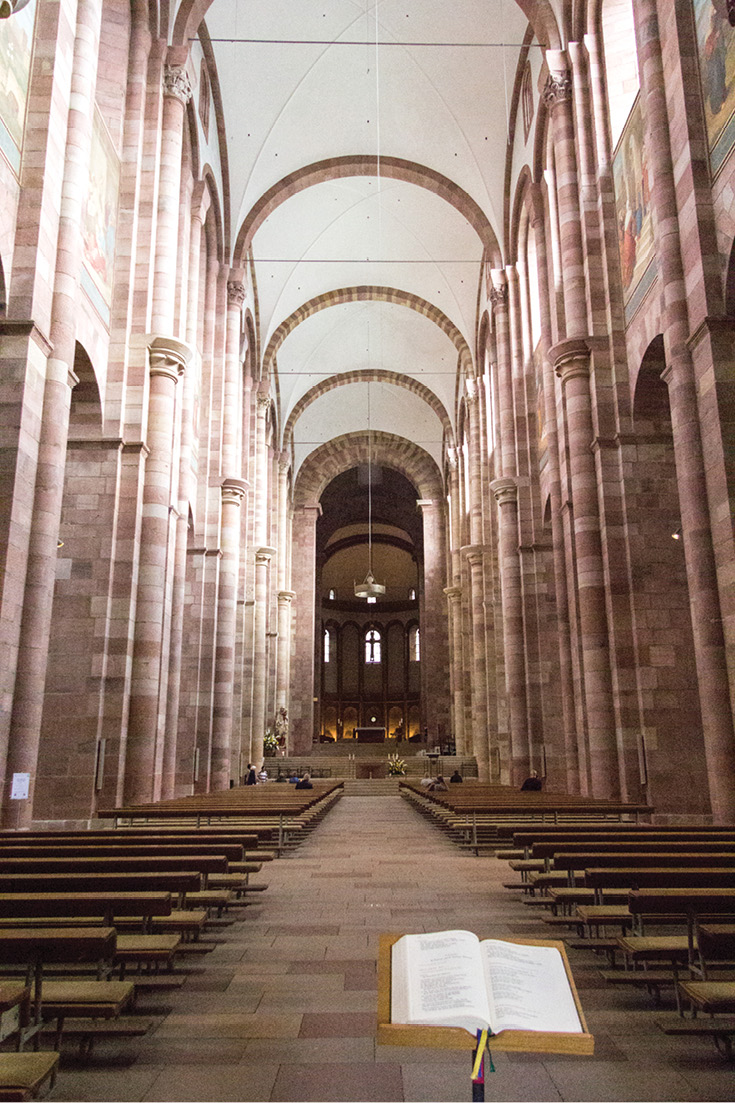
An Image Worthy of a Pilgrimage
A delicate, carefully painted standing Madonna statue quietly demands your attention at the front of the nave with fresh flowers at her feet and candles lit before her. This image, sculpted by German sculptor August Weckbecker, consecrated by Pius XI in Rome, was brought into the Speyer Cathedral in 1930. In doing so, the pilgrimage history for the Speyer Cathedral gained a new chapter to a centuries-long legacy.
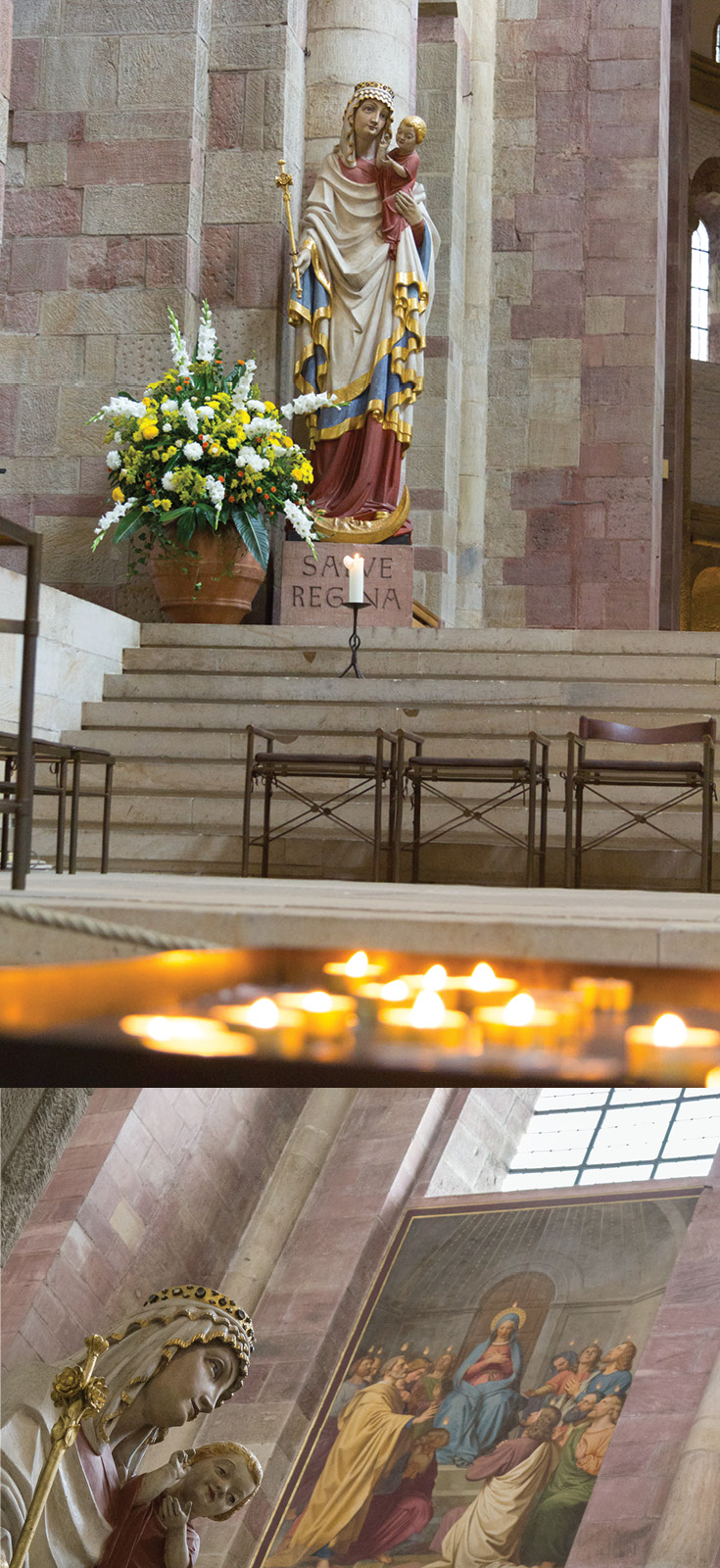
Also in honor of the cathedral's patron saint, the Blessed Mother Mary, along the walls of the nave is a 24-part series depicting Mary’s story painted by Johann von Schraudolph in the mid 1800s. These frescoes were part of an even larger installment and collaboration with Joseph Schwarzmann that was unfortunately removed in the 1960s in an attempt to make the cathedral appear more ‘romanesque.’ Some of the frescoes that were removed have been restored and are now in a new display in the Emperor's Hall of the Cathedral.
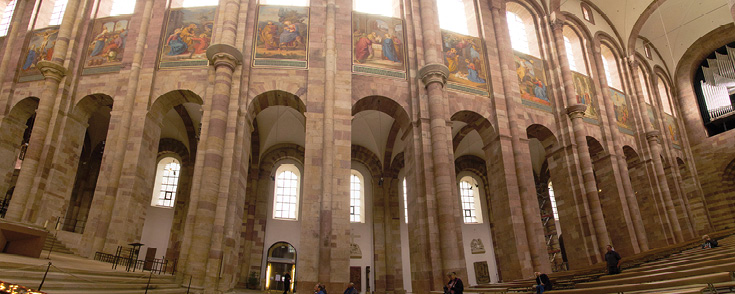
The Mount of Olives
Beside the Cathedral in a leafy clearing, you discover the sculpture ‘The Mount of Olives’, once part of the cloister grounds that were destroyed in the fire of 1689. What survived from Hans Syfer’s original piece was incorporated into the present day replacement by Speyer sculptor Gottfried Renn in 1856. A roof was built above the statue to prevent further wear and tear. Not sure why the roof has a rooster on top. Puzzling, but charming.
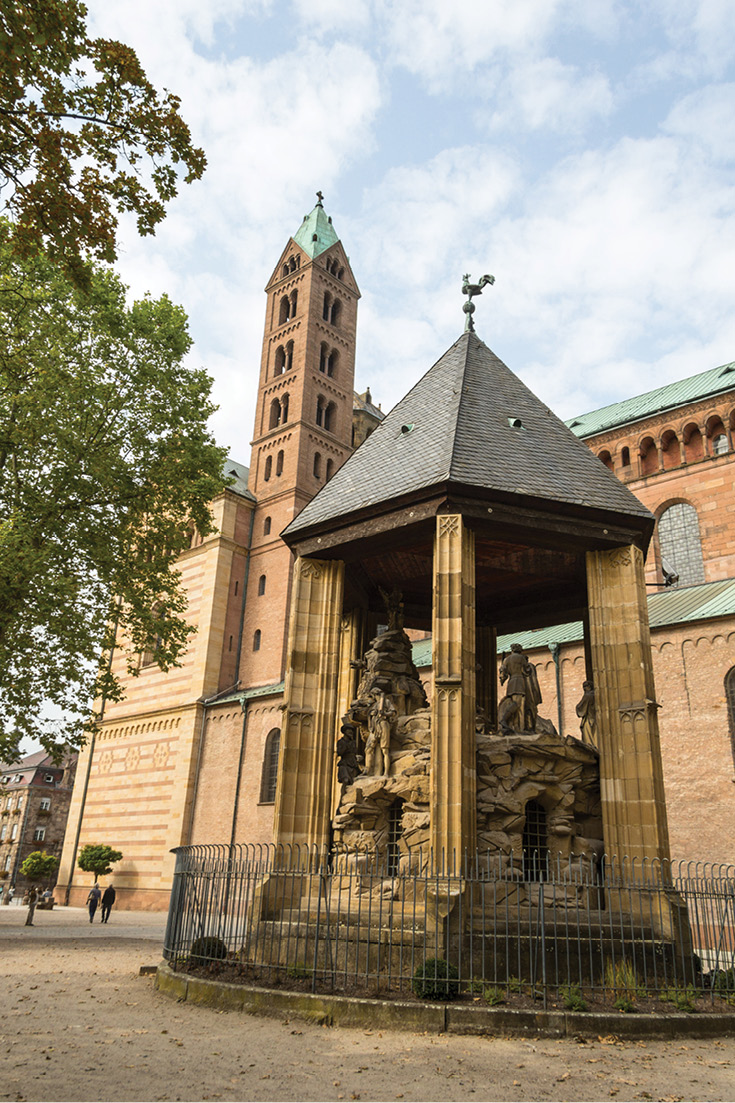
Speyer Cathedral Bowl
Outside the western entrance of the Speyer Cathedral stands the Cathedral Bowl. Many, many years ago it was often used as a loophole for those hoping to escape prison sentences, as the bowl marks the separate bishop and city territories. Prisoners would make a run for the bowl in order to be out of the city's jurisdictional area, now being protected by the church. And historically, to welcome a new bishop, the bowl was filled with wine for the citizens to freely enjoy.
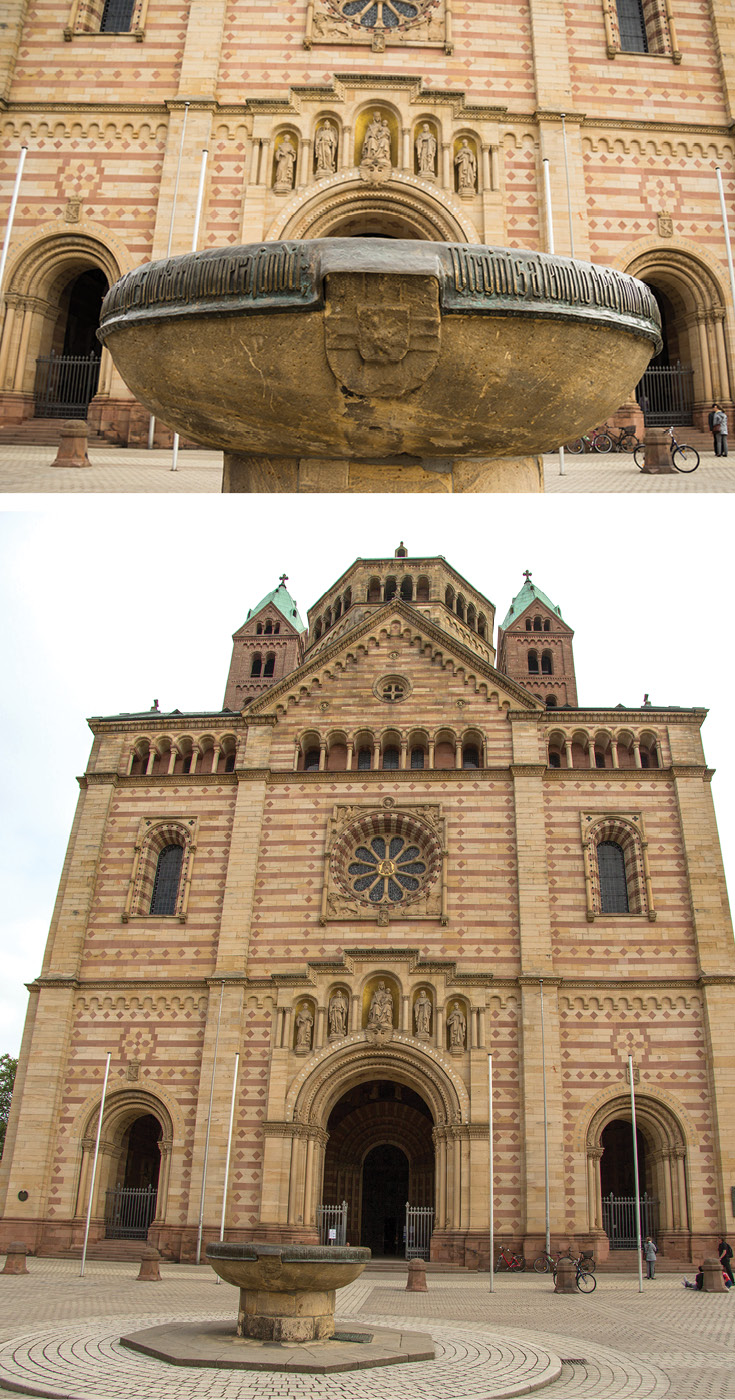
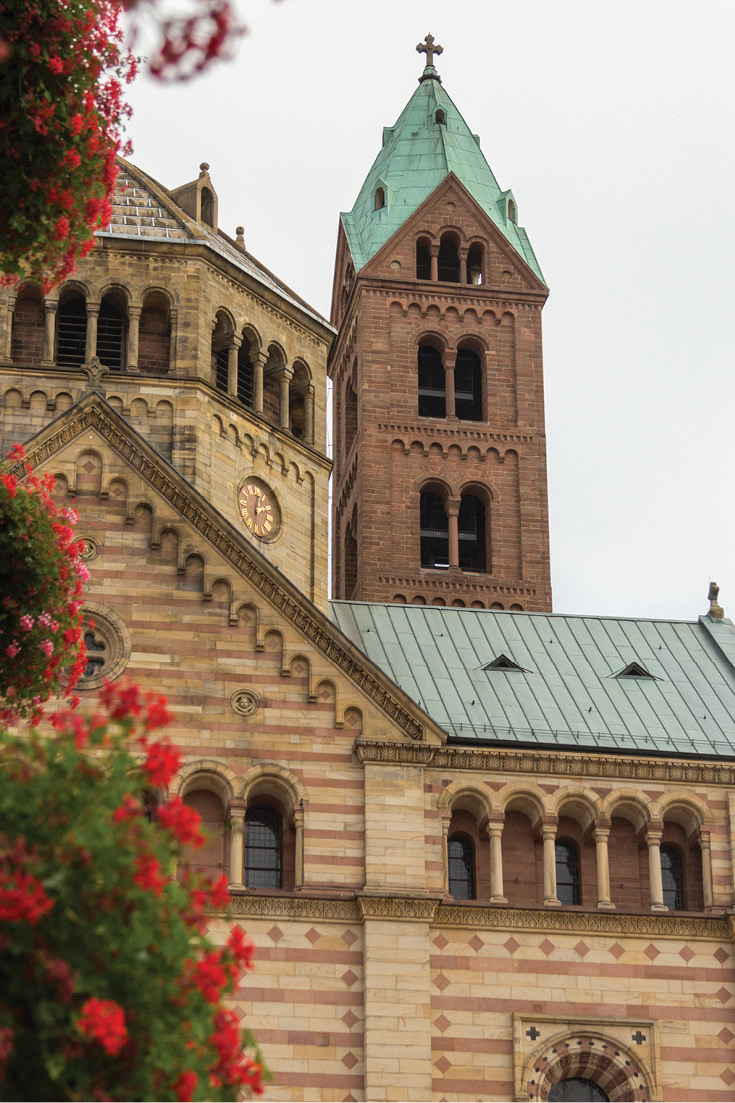
Follow Along
If you enjoyed this article, or these topics sound interesting to you, you'll love our weekly newsletter. You'll receive a free Germany Packing list for signing up, and you'll receive each week's newest posts every Friday. Thank you for reading!

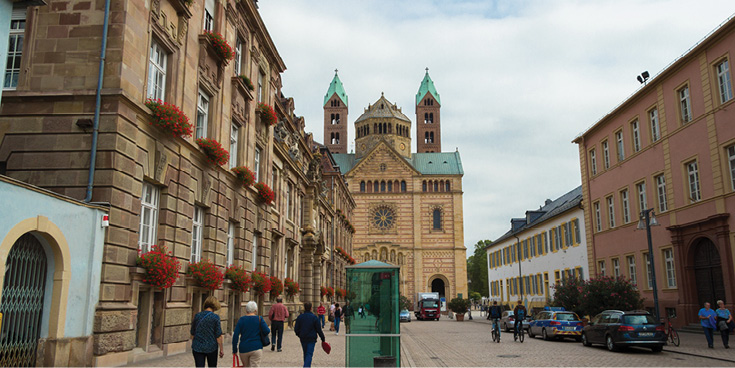
You have to admit, the building is impressive. It reinforces the idea that you’re about to witness man-made achievements before you even buy your ticket. I wonder if the architects were playing against the idea that you should think outside the box when they decided to literally build a modern, cold-looking, glass box, and then enclose the art in warm, Jurassic-age limestone. The new museum building was opened in 2005, and designed by architects Hascher and Jehle, the triumphant winners of a competition amongst 341 architect offices. They sought and accomplished building a museum that offered varied exhibition spaces, and felt open to the city outside. For the museum visitor, the act of changing floors is both becoming a part of the public art of the museum architecture itself, as revealed by the glass windows to passersby outside, and a visual delight with its panorama views of the city-center.
Swabian Impressionism
Thanks to Count Silvio della Valle di Casanova's donation of his private collection of Swabian Impressionist works in 1924, the Kunstmuseum Stuttgart had a hearty foundation to start. Impressionism is my favorite art period, and the ‘Swabian’ element grabbed my curiosity. What made this Impressionist collection ‘Swabian’? Swabia refers to a region of fluctuating borders within Germany, one that usually included the city of Stuttgart. In today’s geography Swabia has been swallowed up by the states of Bavaria and Baden-Württenberg.
Swabian Impressionist referred to where the artists were from, more than a different variation of Impressionism. Although some may point out that their paintings consisted of more earthy tones than their French counterparts, this was in reflection of the Swabian landscapes they were depicting. The names to know are Hermann Pleuer, Otto Reiniger, and Christian Landenberger. Hermann Pleuer, whose landscapes often included some form of rail or trains in the scene are easy to identify. Impress your friends when you name the artist without looking at the calling card.
Otto Dix
We’ve discussed Expressionism before as it related to the architecture of a special street in Bremen, Germany called Böttcherstrasse. You can check out those earlier posts here, Böttcherstrasse: An Introduction (Part 1), Paula Modersohn-Becker Museum (Part 2) Mostly Expressionist, Sort of North German Gothic (Part 3). Expressionism also has a painting counterpart, a style that Otto Dix is very well known for. He distorted the figures in his painting for an emotional effect, to express a feeling. Expressionist; expressing feeling.
